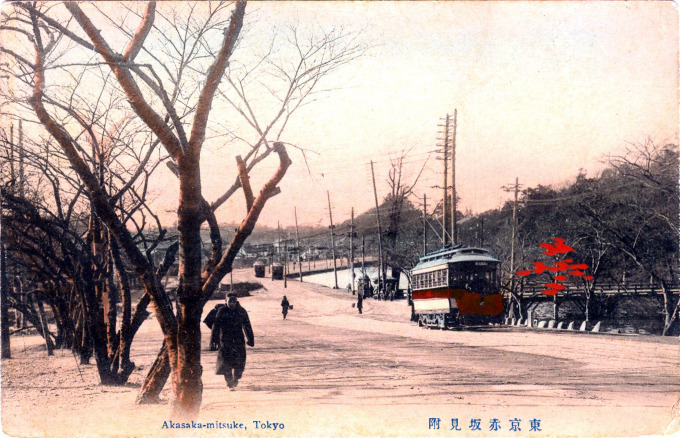
A streetcar glides past Benkeibashi, at Akasaka Mitsuke. In the distance can be seen the look-out hill called Akaneyama. It would disappear as urban development rapidly progressed into the Taisho Era.
“The High City was sparsely populated in Edo and largely emptied by the Restoration. The high ranks of the military aristocracy went away; the lower ranks provided some of the most successful Meiji bureaucrats, politicians and entrepreneurs, and ample stories of tragedy and desperation as well.
“Then they all went away, and the High City was turned over to tea and mulberries. The Meiji government, after initial hesitation, began a policy of confiscating unused lands and encouraging their return to agriculture.
“There were for a time more than a hundred acres of tea and mulberries in what was to become Akasaka Ward. The avenue that leads southwest from the Akasaka geisha quarter seems to have passed through mulberries and little else.
“The tea bushes and the mulberry trees soon withered, and development came.”
– Low City, High City: Tokyo from Edo to the Earthquake, Edward Seidensticker, 1982
- Cherry Blossom at Akasaka, Tokyo, c. 1910. At Benkeibashi.
- Cherry Blossom at Akasaka, c. 1910. With the Detached Palace in the background.
Modern, fashionable Akasaka Mitsuke [red slope lookout] was once a quiet, rural outpost on the outskirts of Edo. The area took its name from the hill upon which the lookout was perched, Akaneyama (seen in the postcard image above), that rose above what are now the grounds of the Akasaka Detached Palace. A handful of gunners, lancers and archers protected this approach to the feudal capital, one of the 36 “mitsuke” [approach] to Edo that anchored the feudal city’s outer-most defense perimeter. Akasaka Gate, torn down in 1873 but once situated beyond Benkeibashi near where the Hotel New Otani is now located, guarded the western entrance into the castle grounds.
As rural as Akasaka once was, it was not without its enticements. Into the final years of the Meiji era, it was a bargain, raffish version of Shimbashi known both for its good restaurants and its “barley rice girls”. Businessmen, journalists and politicians alike frequented the many establishments that sprouted after the Restoration.
- Cherry Blossom at Akasakamitsuke, Tokyo, c. 1910.
- Cherry Blossoms at Akasaka, c. 1910.
The area in and around Akasaka was, and still remains, largely residential. Perhaps the most famous residence still standing is that of General Nogi, hero of the Russo-Japanese War, who famously committed seppuku [ritual disembowelment] upon the death of Emperor Meiji in 1912. His home, at Nogi-zaka, is open to the public as a museum.
Nearby Aoyama [green willow] is also where the main Aoyama Gakuin campus is located. Long gone, though, are the Meiji-era Aoyama parade grounds. When the Hibiya parade grounds were repurposed by the Meiji government and turned into the palace plaza and Hibiya Park, Aoyama was chosen for the relocated military drill grounds.
- Cherry Blossom at Akasaka-mitsuke, c. 1910.
- Cherry Blossoms at Akasaka-mitsuke, c. 1910.


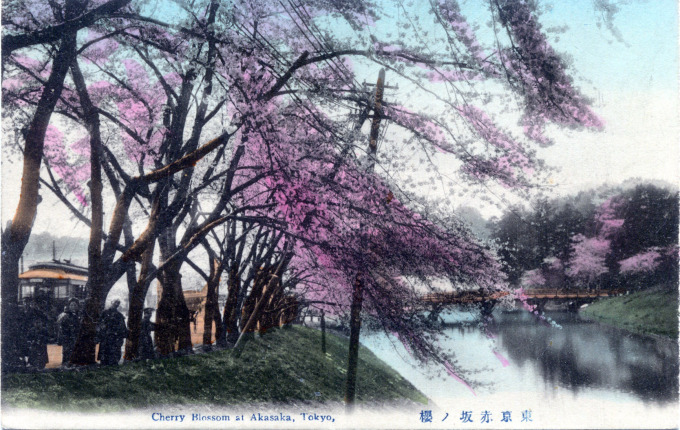
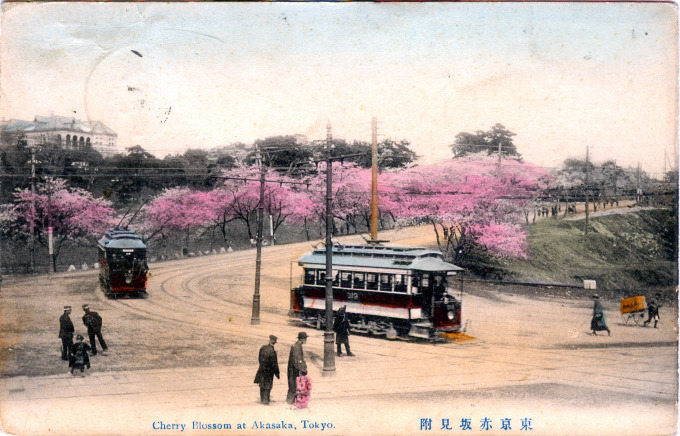
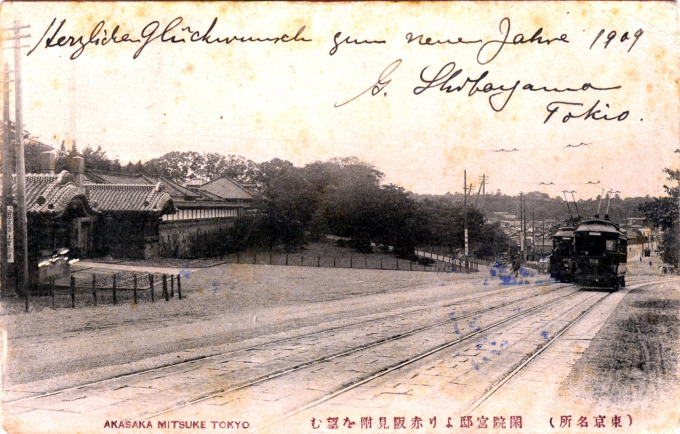
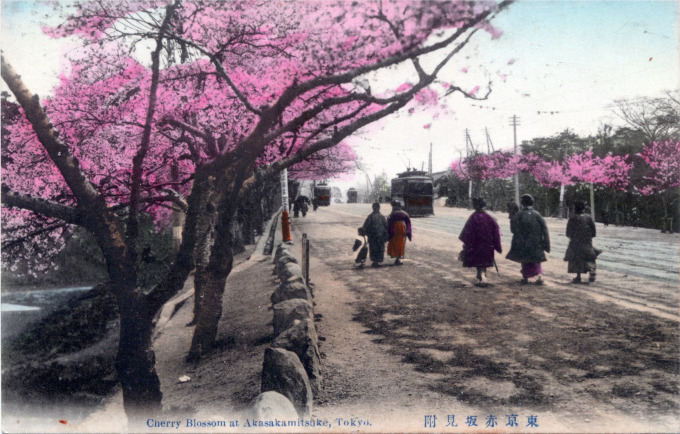
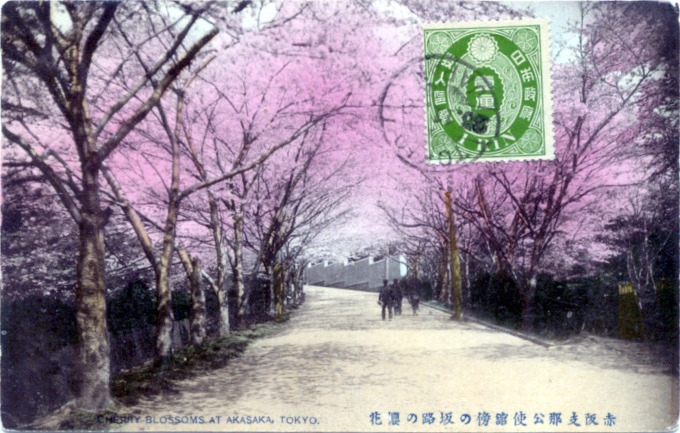
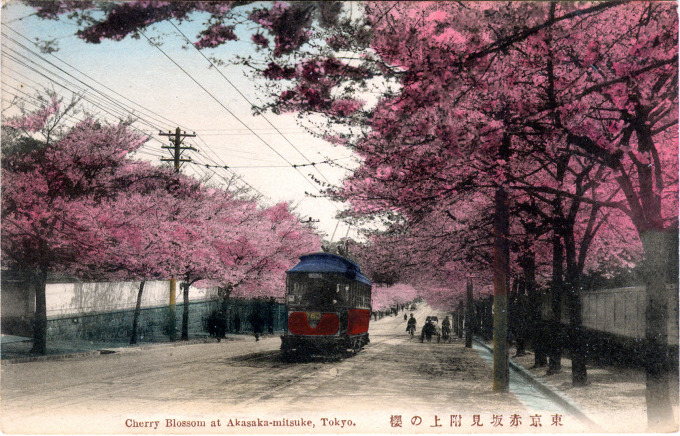
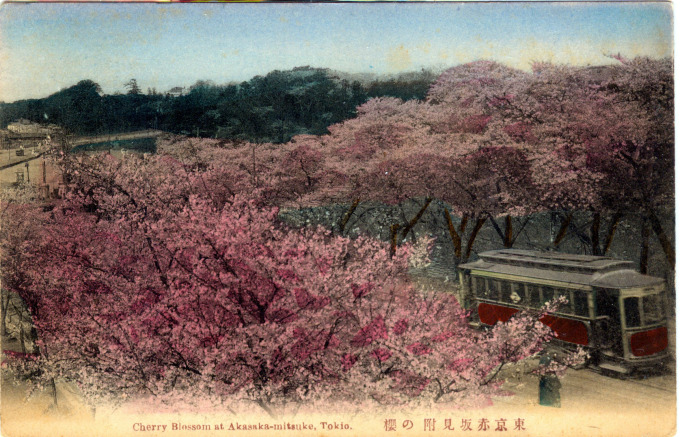
Pingback: "Seryna" restaurants advertising postcards, Roppongi, c. 1970. | Old Tokyo